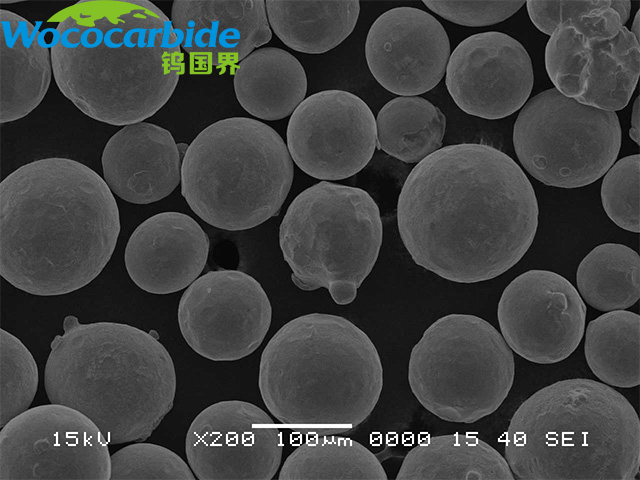

1. We know that the best compound carbide for the production of titanium-containing cemented carbide is CK40. But if used properly, CK24 also has its unique advantages, but we can't generalize to use the traditional fixed ratio CK24. It should be changed to an approximate ratio of WC/TiC=70/30.

2. In order to keep improving the quality of the alloy, we believe that two different ratios are used to produce compound carbides. YT5 alloy (including other alloys containing titanium) is WC/TiC=71/29 (that is, the traditional ratio of CK24), YT14 and YT15 are based on WC/TiC=68/32 (the total carbon content of duplex carbides is 93% of the theoretical value).
Because YT5 alloy is generally used for gravity cutting and rough milling, high impact performance is required, and the wear resistance and precision of the alloy are not very high. YT14 and YT15 are generally used for turning carbon steel, semi-finishing and finishing, which require high precision and wear resistance of alloys, but slightly lower requirements for impact resistance of alloys.
3. Theoretical basis
1. It is confirmed from foreign and domestic relevant research data that the fully saturated CK24 (the original particle size of TiO2 for the production of compound carbides is required to be less than 2 microns), in the grinding and annealing state (wet grinding with Co for 72 hours), the amount of decomposable WC phase is greater than 2%, 2-5% in the sintered state (if 29/71 is used, the WC phase will be decomposed more). Also, the Fisher grain size at this time is the coarsest. In addition, the size of the ground subgrain of solid solution produced under this process can reach more than 3100 angstroms, which is much larger than that of CK32, which is more than 1500 angstroms. All of the above reasons will increase the grain size of the alloy and enhance the impact toughness, so it is beneficial to improve the performance of the YT5 alloy.
2. Since YT14 and YT15 have high wear resistance and precision, it is required that the solid solution should precipitate as little WC phase as possible during the alloy production process, and eliminate or reduce the appearance of "ring structure", while the subgrain size is still be big. Therefore, it is more appropriate to design the compound carbide as WC/TiC=68/32. Because the nominal composition of CK24 refers to the saturated solubility of WC in TiC at the alloy sintering temperature, and the temperature for producing duplex carbides should be above 1750 °C, the dissolution of WC in TiC is still unsaturated at this time, so in the alloy production During the process, the WC phase will be continuously decomposed, and the uniformity index of the solid solution will be reduced. For this reason, we believe that it is necessary to take advantage of the saturation advantages of CK24 and overcome its weaknesses, so it is more appropriate to design the compound carbides used in YT14 and YT15 as WC/TiC=68/32. A small part of the solid solution is left in the alloy sintering to complete, which can not only reduce the precipitation of WC phase, but also greatly reduce the appearance of "ring structure". In addition, the lattice constant and subgrain size of this solid solution are close to those of the saturated solid solution, while the Fischer grain size and free carbon can be reduced, and the uniformity index is also improved, which is beneficial to improve the performance of the alloy.
Hot information

